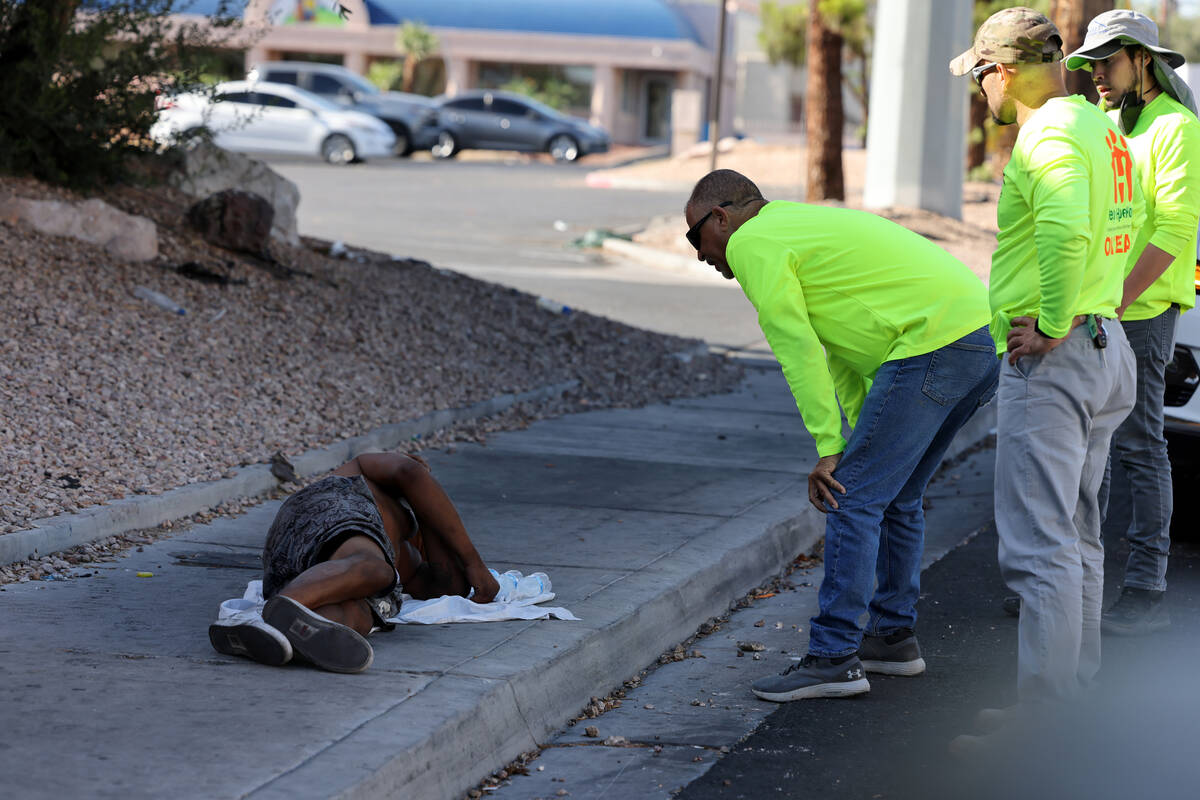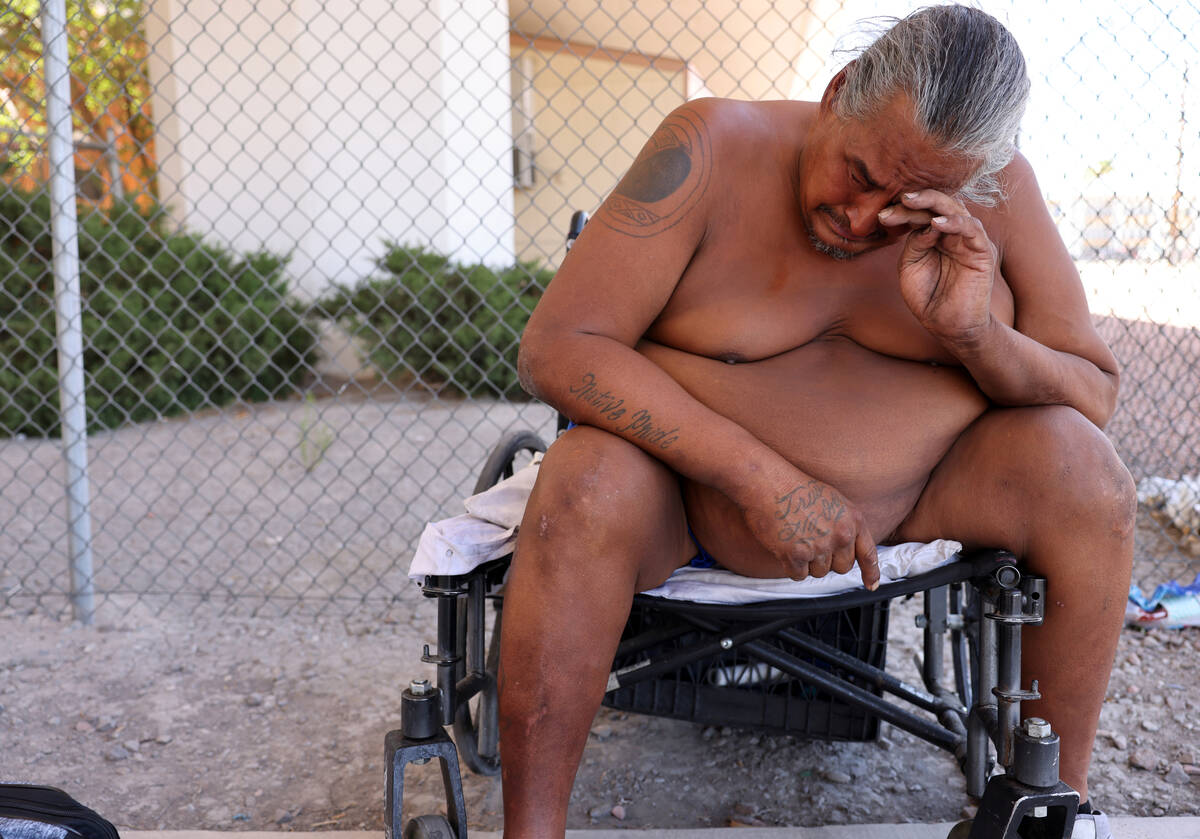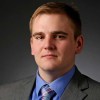’Alarming’ trend continues as Vegas heat deaths hit decade peak in 2021
Police had already gathered by the time Denise Lopez entered the empty cul-de-sac in downtown Las Vegas.
A woman, overtaken by the heat, lay dead in the cracked and littered street. Someone had draped cardboard over her.
Officers asked if Lopez could identify the decomposing corpse, she said.
“She was a friend of mine, and it didn’t look like her. I couldn’t do it,” said Lopez, 41, who has been homeless since she moved to the city 13 years ago. Tears filled her eyes as she recalled the scene from the shade under a U.S. Highway 95 overpass, only a block away from where it happened.
Since Lopez’s friend died in May 2020, the Southern Nevada heat has only grown deadlier.
Heat-related deaths nearly doubled in 2021, totaling 245 people, according to the Clark County coroner’s office. Annual deaths among residents and visitors also surged in the last decade, increasing more than fivefold, a Review-Journal analysis found.
The situation is alarming, experts say, as summers grow hotter.
It’s “a reflection of the fact that we just do not have a handle yet on how to deal with this threat,” said Rachel Licker, a principal climate scientist for the Union of Concerned Scientists.
Heat exposure can kill someone outright or can aggravate other health problems until they become fatal. The coroner’s office includes both in its tally of heat-related deaths.
Most of the deaths in the past decade were among people older than 50, many of whom had underlying health conditions like heart disease, coroner data shows. Substance abuse, which can hinder the body’s ability to cool down, is also a concern. Methamphetamine played a role in more than one-third of deaths last year.
Despite the mounting toll – heat-related deaths outpaced the county’s car fatalities last year – Southern Nevada Health District officials say they aren’t exactly sure what is driving the increase. Vice-chairman Brian Knudsen said he blames many systems for failing Las Vegas residents.
“We do not have adequate (affordable) housing. We don’t have an adequate transportation system. We don’t have adequate health care,” he said. “And so for our most underserved populations, we’re going to continue to see changes in their health status because of the climate.”
Providing aid to homeless
In the shadow of a tree off Algonquin Drive, a man lay twisted on the sidewalk, sprawled atop a white t-shirt that protected his skin from the hot pavement. It was already 90 degrees, barely two hours after sunrise in early June.
Louis Lacey rushed over with a handful of plastic water bottles. He crouched down and quickly spotted the white ID bracelet around the man’s wrist.
The day marked the region’s first excessive heat warning of the year, with temperatures soaring well above 105 degrees throughout the weekend. A response team from the nonprofit HELP of Southern Nevada, led by Lacey, would spend it providing aid to the homeless, one of the most vulnerable populations to extreme weather.
Lacey returned to his vehicle a few minutes later, exasperated.
“He just got out of the hospital,” he said. “For sunstroke.”
Lacey said he sees the dangers of heat exposure every day – especially during the summer months, which are growing hotter.
This year, Las Vegas was crowned the second-fastest warming city in the nation, behind only Reno, according to Climate Central. The city hit 117 degrees in July 2021, tying its all-time record temperature.
From June through August, when most heat-related deaths occur, days topping 100 degrees have increased modestly since the 1990s, federal weather data shows.
But the nights with lows under 80 degrees numbered only 27 last summer, providing little respite during even the coolest hours. In the 1990s, most years recorded more than 60 such nights.
“The last couple of years we’ve seen heat waves that were more intense than most of us would have expected,” said Steph McAfee, Nevada’s state climatologist.
As Lacey’s team snaked through downtown in white SUVs, they made their second stop at a shaded nook off Mojave Road, where a man and woman huddled with their dog, Waffles.
M.J. Douglas, 34, said the summer heat has become overwhelming during her three years living on the streets.
She and her partner, Felicks O’Brien, 31, douse their clothes with water throughout the day to stay cool. But some stores refuse to give them ice water, and many people lock their outdoor water spigots. They visit parks with splash pads, Douglas said, but on especially hot days they stay put, because the pavement burns Waffles’ paws.
Low-income neighborhoods suffer
Deaths were most prevalent in low-income neighborhoods around downtown Las Vegas, coroner data shows.
In June, satellite imaging showed downtown was about 14 degrees hotter than Las Vegas Valley suburbs. Scientists blame the “urban heat island” effect, in which a lack of vegetation, dense development and abundance of pavement trap heat low to the ground and release it back into the air at night.
Since 2010, more than 130 of the deceased were exposed to extreme heat in the downtown 89101 ZIP code, where Lopez’s friend was found.
The area has the highest concentration of deaths in the county, rivaled only by the adjacent 89104 ZIP code. The coroner’s office estimates homeless people accounted for about half the deaths in these two neighborhoods. Hotter neighborhoods often have the least resources to protect themselves, said Nancy Brune, a senior fellow at the Kenny Guinn Center for Policy Priorities.
Across the county, most deaths occurred in ZIP codes with median incomes under $45,000. In these neighborhoods, residents are exposed to extreme temperatures at work, in transit and even inside their homes, Brune said.
Air conditioning can be cost-prohibitive, making the heat inescapable.
“They have to choose between paying for their AC bill… or buying food,” she told lawmakers this June at an interim meeting between two state legislative committees, Natural Resources and Health and Human Services, discussing the impact of climate change.
Penina Ohayon said she often forgoes air conditioning to make ends meet.
The 72-year-old moved here from Los Angeles in late 2020. She cleans houses to pay her bills, but makes only about $400 a week. On many days, a small box fan is all that cools her modest northwest Las Vegas apartment.
The nighttime is the worst. Last summer, Ohayon woke up every two hours to mist her body with a spray bottle.
“You end up waking up because you can’t breathe,” she said.
Dozens of people died inside homes from the heat last year, coroner’s records show.
Many were found in places where the AC was either turned off or not functioning. One man’s recreational vehicle measured more than 120 degrees when his body was found.
The economic fallout brought on by COVID-19 likely intensified the situation for many. The county has paid NV Energy more than $28 million in federal pandemic aid for utilities at more than 57,000 households.
Nevada’s Public Utilities Commission does not track how many households have their power shut off for falling behind on utility bills.
What officials are doing
Local officials have employed multiple strategies to combat extreme heat.
That includes opening cooling stations during heat waves, passing out water and covering bus stops.
The Regional Transportation Commission last year analyzed which areas of Southern Nevada are at the highest risk to extreme heat. The city of Las Vegas has also pledged to plant 60,000 trees by 2050 in its hottest neighborhoods.
In June, the Nevada Occupational Safety and Health Administration launched an enhanced inspection program to reduce heat-related worker injuries.
But there are still many gaps in public policy on the subject, according to the Guinn Center’s Brune.
A 2021 report from the think-tank called for adding water fountains and misting systems to bus stops. It also called on Clark County to explore adopting an ordinance that more explicitly requires homes and apartments to have air conditioning.
“It’s taken us a while to truly come to terms with all the implications and the way the extreme heat is affecting us,” Brune said.
Last year, county coroner Melanie Rouse said her office adopted new investigative guidelines to better identify when heat kills. Doing so, she said, was critical to capturing the full scope of heat’s public health impacts.
This week, a new state heat planning team published a list of extreme-heat resources gathered from local and federal agencies. Gov. Steve Sisolak assembled the team this spring to address rising temperatures.
So far, Nevada senior climate advisor Kristen Averyt said the team has been compiling how local governments and other organizations are already responding to the public health threat. Averyt said it is too early for the team to have developed policy recommendations to reduce heat-related fatalities.
“An important part of that is to make sure that we figure out what’s not being done so that we can fill in those gaps as well,” she said.
Stifling heat on the streets
The HELP convoy stopped in front of a desolate lot across the street from Boulder Station Casino. They crouched near the opening of a tent pitched in the gravel beside the road, where a woman lay sweating inside.
It was not yet 10 a.m., but it was already a stifling 97 degrees.
Across the empty lot, two men sat on a low wall in the shade of a vacant strip mall. Carlos Lucero, 45, said this was his first summer experiencing homelessness. He doesn’t have a plan for withstanding the heat and worries about falling ill.
He and his girlfriend have been cooling off inside casinos for short stints, leaving before security officers take notice. Lacey said HELP is working to find them housing and employment.
Lucero, his exposed torso tanned from the sun, clutched a plastic water bottle as he recalled how a friend was recently hospitalized after passing out in the sun.
“It’s been killing us the last few days,” he said. “I don’t know how bad it’s going to get.”
Contact Teghan Simonton at tsimonton@reviewjournal.com or 702-477-3850. Follow @teghan_simonton on Twitter.
Contact Michael Scott Davidson at sdavidson@reviewjournal.com or 702-477-3861. Follow @davidsonlvrj on Twitter.



























